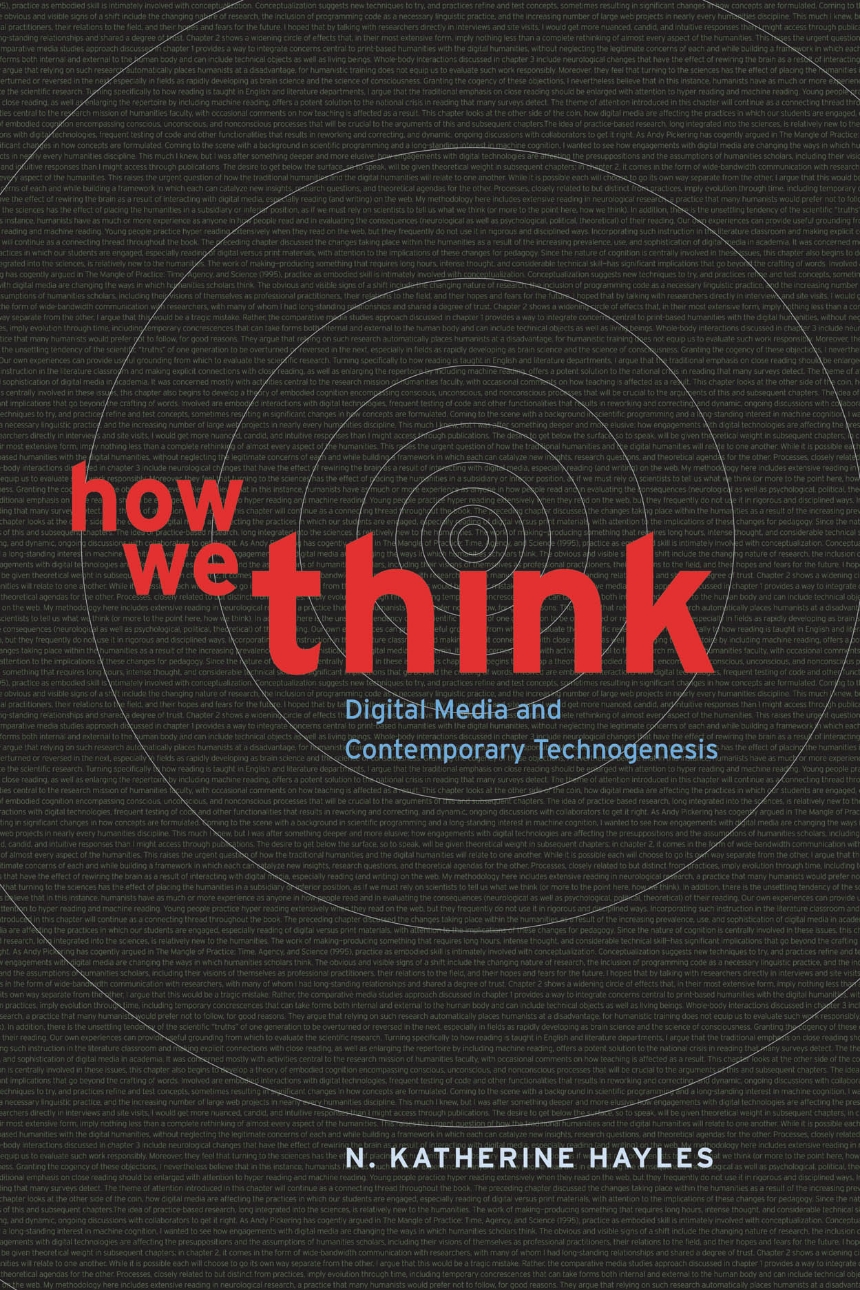How We Think
Digital Media and Contemporary Technogenesis
“How do we think?” N. Katherine Hayles poses this question at the beginning of this bracing exploration of the idea that we think through, with, and alongside media. As the age of print passes and new technologies appear every day, this proposition has become far more complicated, particularly for the traditionally print-based disciplines in the humanities and qualitative social sciences. With a rift growing between digital scholarship and its print-based counterpart, Hayles argues for contemporary technogenesis—the belief that humans and technics are coevolving—and advocates for what she calls comparative media studies, a new approach to locating digital work within print traditions and vice versa.
296 pages | 33 halftones | 6 x 9 | © 2012
Language and Linguistics: Language and Law
Literature and Literary Criticism: General Criticism and Critical Theory
Reviews
Table of Contents
Acknowledgments
First Interlude: Practices and Processes in Digital Media
2. The Digital Humanities: Engaging the Issues
3. How We Read: Close, Hyper, Machine
Second Interlude: The Complexities of Contemporary Technogenesis
4. Tech-TOC: Complex Temporalities and Contemporary Technogenesis
5. Technogenesis in Action: Telegraph Code Books and the Place of the Human
Third Interlude: Narrative and Database: Digital Media as Forms
6. Narrative and Database: Spatial History and the Limits of Symbiosis
7. Transcendent Data and Transmedia Narrative: Steven Hall’s The Raw Shark Texts
8. Mapping Time, Charting Data: The Spatial Aesthetic of Mark Z. Danielewski’s Only Revolutions
Notes
Works Cited
Index
